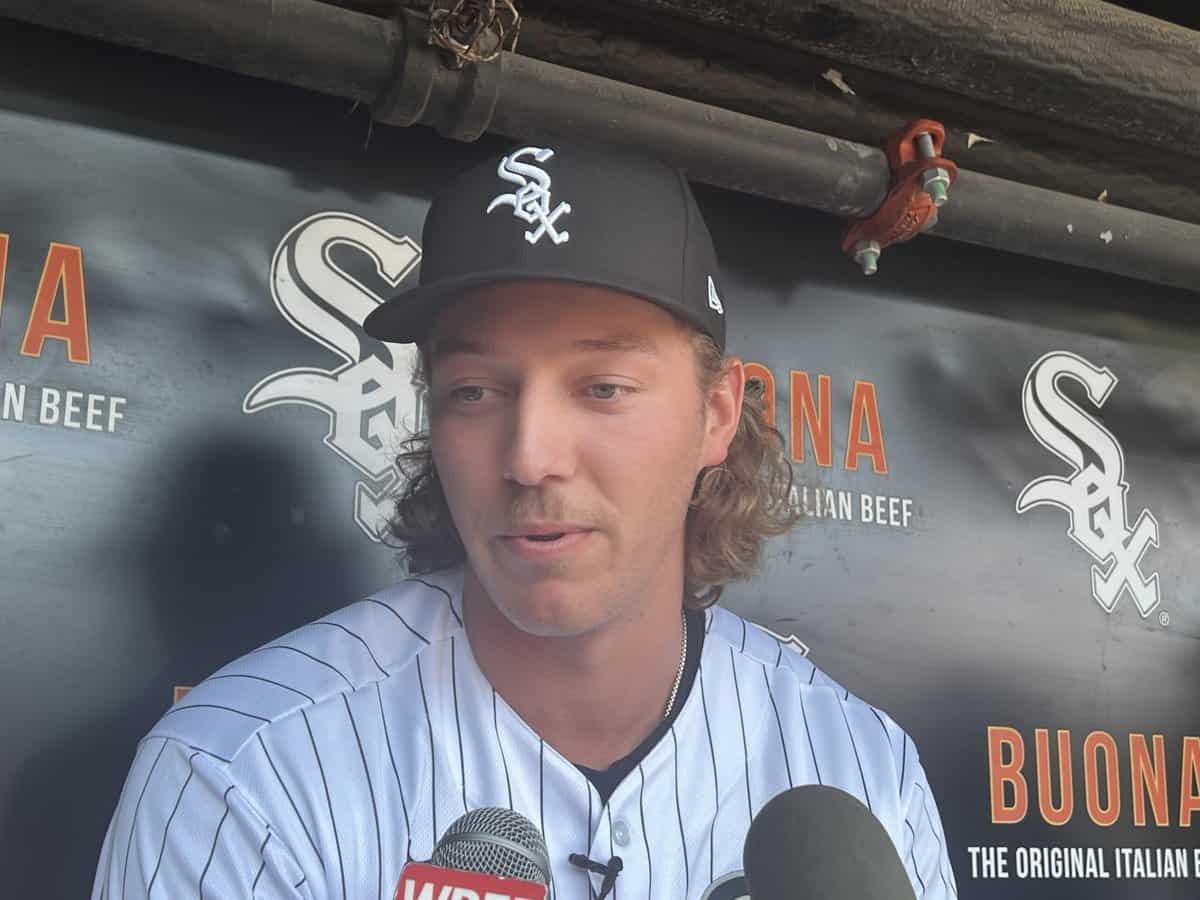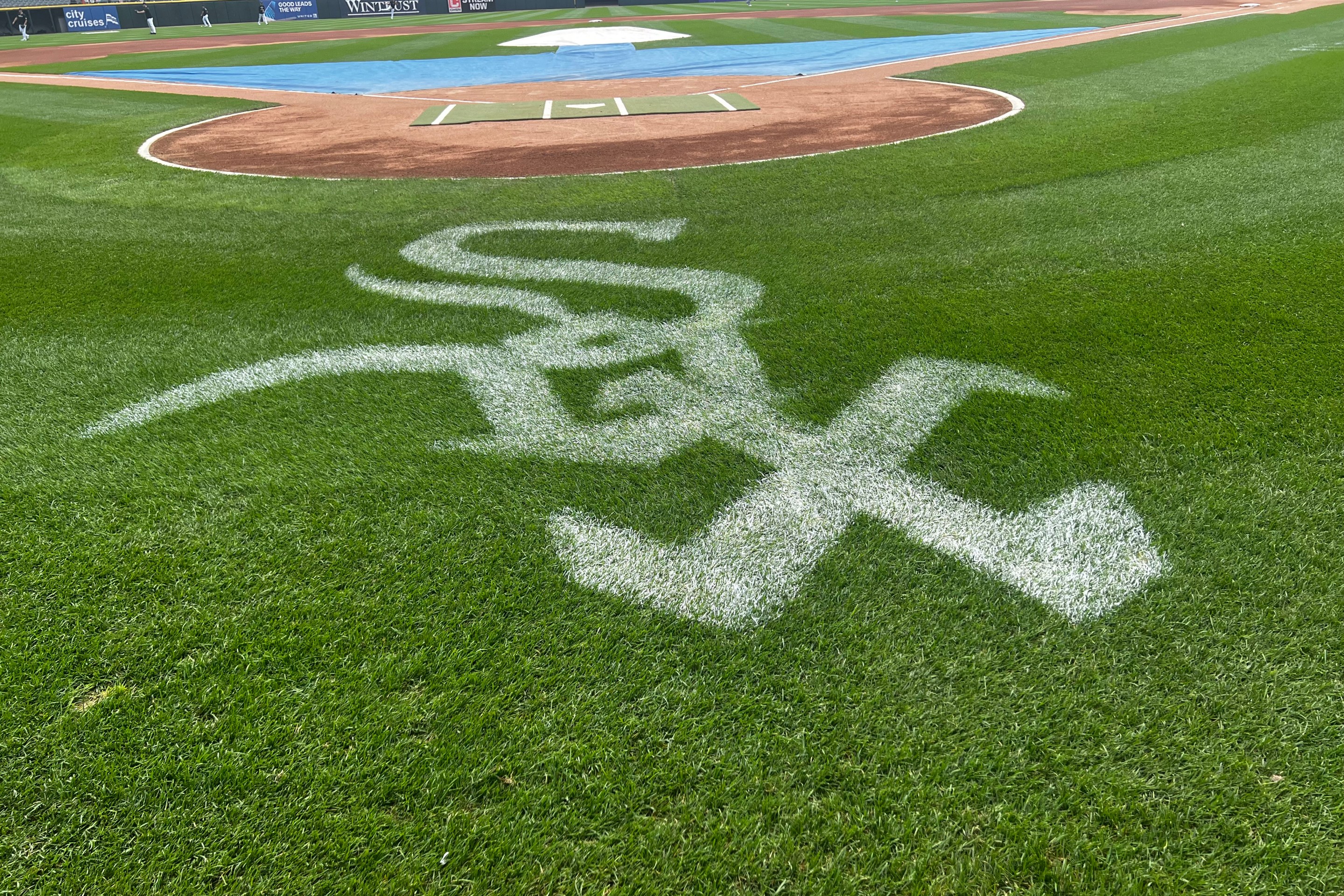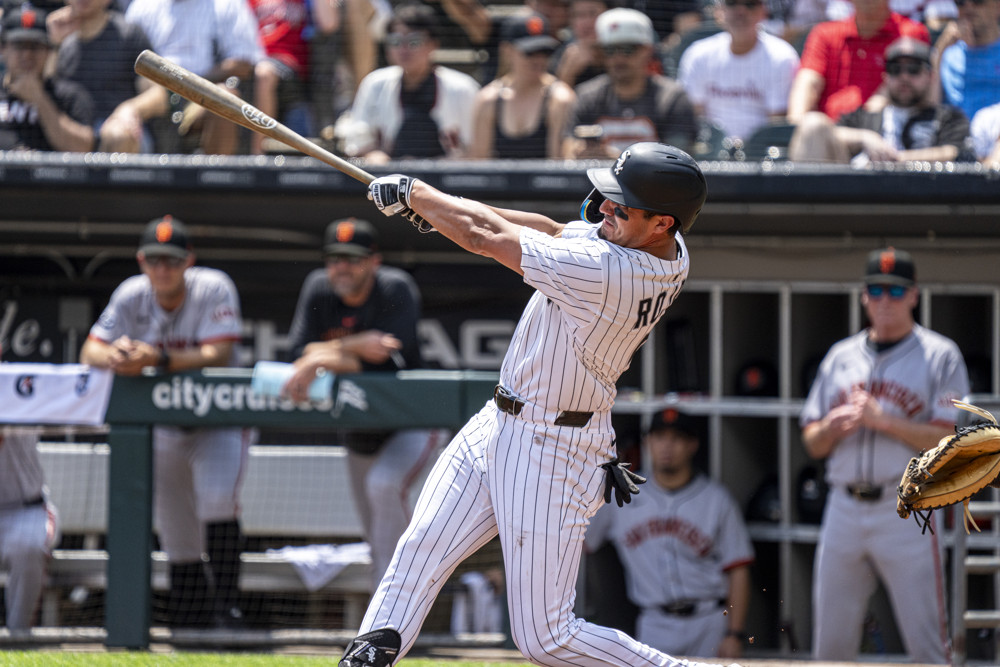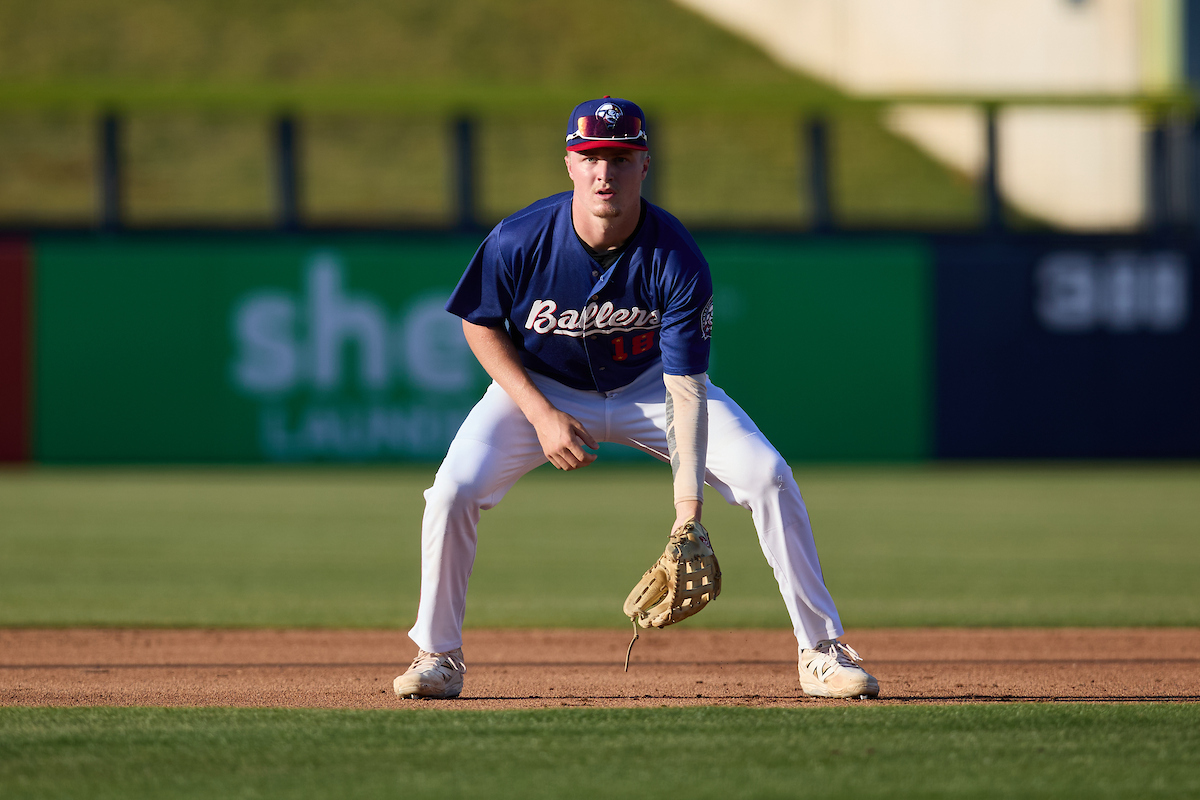In between the Southern League champion Birmingham Barons and the Carolina League runner-up Kannapolis Cannon Ballers, the Winston-Salem Dash had a hard time getting anything going.
They finished 60-72, and it was pretty much evenly divided between the halves. While a few prospects -- Noah Schultz, Jacob Gonzalez, Tyler Schweitzer -- earned expedited promotions, the bulk of the roster was in it for the long haul, playing neither well nor poorly enough to consider a move in either direction.
Regarding the position players, it was a matter of impact.
| Hitters | Age | R/G | BB% | K% | AVG/OBP/SLG |
|---|---|---|---|---|---|
| W-S | 22.5 | 4.22 | 10.6 | 23.8 | .235/.326/.348 |
| League | 22.1 | 4.56 | 10.5 | 25.8 | .231/.323/.365 |
The Dash were in the bottom half in all extra-base hits categories, and finished with the third-fewest in a 12-team league. That's pretty remarkable considering they were fourth in the league in hits. Singles just accounted for 70 percent of those hits, which was second in the league to Jersey Shore, which batted 25 points higher.
| Pitchers | Age | RA/9 | BB% | K% |
|---|---|---|---|---|
| W-S | 23.2 | 5.27 | 11.4 | 24.7 |
| League | 23.0 | 4.56 | 10.5 | 25.8 |
On the pitching side, the Dash finished with the second-most walks in the majors, but it was a distant second behind Aberdeen, and most of it was due to relievers turning in some pretty severe performances in partial seasons. The starting pitchers were more or less fine, and in a couple of cases, the delayed promotions were more a consequence of stability in the Birmingham rotation above.
Position players
Samuel Zavala: Zavala inadvertently embodied the Dash's strengths and weaknesses better than any one prospect. With the Padres organization in 2023, he posted a 27.2 percent strikeout rate mostly in Low-A, although an unsuccessful cameo in High-A at the end of the season inflated the total a little bit. Cutting his K rate by 5 percent while spending his age-19 season in High-A should've been a victory.
It's just that nothing else progressed with it. He hit .187/.340/.301 with just eight homers and 25 extra-base hits on the season, a disappointing development after slugging .451, albeit in the California League. He'll be tasked with adding strength in the offseason, because the impact wasn't there.
Wes Kath: Repeating Winston-Salem after hitting .193/.275/.311 with 168 strikeouts over 95 games in his age-20 season, Kath left plenty of room for progress, and he explored some of it. He hit .226/.320/.409, matching or setting career highs in all three extra-base hit columns (16 homers, two triples, 21 doubles). He also cut his strikeout rate by nearly 10 percent, but that mostly serves to highlight that it was 43.2 percent last year, and he merely struck out in a third of his plate appearances this season. Between the team-leading pop and reliable defense at third base, he's found a way to contribute to a minor-league team. "Org player" isn't a label to aspire to for an over-slot second-round pick, but that's the hole he dug himself.
Eddie Park: Another fine representation of a Winston-Salem type, Park started the season a few weeks late due to injury, but made it to Winston-Salem by mid-May after a successful ramp-up period in Kannapolis. Over 74 games and 308 plate appearances, Park totaled just six extra-base hits. He hit .242/.325/.271, and the lack of a threat undermined the value of his strike-zone control, since pitchers didn't have a reason to fear him.
Calvin Harris: It was a rough year for Ole Miss products in the White Sox system, at least ones whose names can't be rearranged to spell "Toe Milk." After hitting .321/.398/.579 for the Rebels in his junior season last year, the fourth-round pick hit just .221/.302/.303 over 68 games, with some time missed to injury, and thwarted just 19 of 121 stolen-base attempts in 63 starts behind the plate.
Casey Saucke: This year's fourth-round pick went from the University of Virginia to Winston-Salem for his first professional action and fared decently in his first 99 plate appearances, even though he spent the first third of them getting up to speed:
- First 34 PA: .156/.206/.188, 1 2B, 2 BB, 9 K
- Last 65 PA: .361/.400/.508, 3 2B, 2 HR, 4 BB, 17 K
The strikeout rate is slightly elevated, and while his plate discipline underwhelmed during his collegiate career, it didn't immediately blow up on him, and he had the courtesy of offsetting the concern by showing immediate power with wood bats, which was another questionable area.
William Bergolla: Bergolla spent the entire season in the South Atlantic League, hitting .300/.359/.381 over 89 games between Jersey Shore and Winston-Salem after coming to the White Sox from the Phillies in the Tanner Banks trade. It's a contact-oriented profile, as he hit just one homer, five triples and 12 doubles while striking out a measly 38 times over 357 plate appearances, but he had the excuse of being 19 the whole season (he turns 20 on Sunday). Upon joining the Sox, he moved from second base to shortstop, and that'll boost his value if he can remain there. His dad was once teammates with farm director Paul Janish, so the White Sox can’t ever give up on Bergolla lest they suffer an awkward phone call.
Jacob Burke: It was a lost year for Burke, who hit just .188/.282/.221 over 274 plate appearances, most of them with Birmingham. His defense and baserunning remained plus, swiping 24 bases in 26 attempts for the Barons, but he started the season 1-for-17, and spent the rest of the year behind the 8-ball. Two IL stints in the second half didn't help.
Pitchers
Hagen Smith: The White Sox stuck to the script with Smith, having him throw three weekly appearances for the Dash with a maximum of three innings after taking him out of Arkansas with the No. 5 pick. He ended up throwing three, 2⅔ and two innings, finishing with a line that looks like it's from out of 2003: 7.2 IP, 7 H, 3 R, 3 ER, 2 BB, 7 K on 118 pitches.
Aldrin Batista: Pound for pound, Batista had one of the most successful seasons of any White Sox prospect, posting a 2.93 ERA over 110⅔ innings and 22 starts, with 17 coming in Kannapolis before a late-season promotion. He responded well to the challenge of Winston-Salem, allowing just three runs and 24 baserunners over 26 innings while striking out 29. It was a very productive age-21 season for Batista, who has handled every challenge asked of him since coming over from the Dodgers in an international pool money trade.
Lucas Gordon: In terms of workload and run prevention, it'd be difficult to ask anything more from Gordon's first full season. The sixth-round pick out of Texas posted a 2.23 ERA over 113 innings, suppressing the Carolina League for 14 starts before making a smooth-enough transition to High-A. He managed to avoid a disaster start the entire season, as he cleared a minimum of three innings in every start while allowing no more than three runs in every start.
So what's the catch? The combination of 61 walks and 98 strikeouts sure seems unsustainable. He got by on the sheer power of limiting hits, but assuming he won't be able to get by allowing a .213 BABIP forever, he'll need a plan for when he can't so easily trade hits for walks.
Seth Keener: The White Sox's third-round pick from 2023 only threw two starts and five innings with the Dash at the end of the season. Neither start was particularly impressive, as he allowed a total of seven runs, but in his defense, he hadn't pitched for nearly two months, departing his July 4 start with Kannapolis in the second inning after four walks and three HBPs.
Prior to the injury, he'd been inconsistent with the Cannon Ballers. He had the tendency to get bogged down with a walks, but when everything clicked, he could overwhelm Low-A hitters with relative ease. It balanced out to a 3.36 ERA, a .202 average against and 75 strikeouts over 64⅓ innings. The promotion to Winston-Salem after the long layoff didn't exactly put him in a position to succeed, but that's where he's going to start next year regardless.
Others of note: Shane Murphy served as the control sample for pitching prospects at Winston-Salem, with an emphasis on control. He walked just 15 batters over 91⅓ innings, and routinely completed five effective innings despite a fastball that barely touches 90. He was called up to Charlotte a couple times for emergency duty, and looked better the second time. Tommy Vail, a 25-year-old undrafted free agent out of Auburn, posted a 1.69 ERA and struck out 100 batters over 69⅓ innings evenly divided between Kannapolis and Winston-Salem. He had more walks (36) than hits allowed (35), but righties slugged .163 against him, which is something for a 6-foot-tall lefty. Also, he pitched at TCU and Notre Dame before ending up at Auburn. My guess is that you can stamp him "old for the level" and be correct, but I just wanted to point out all the wacky things going on.





